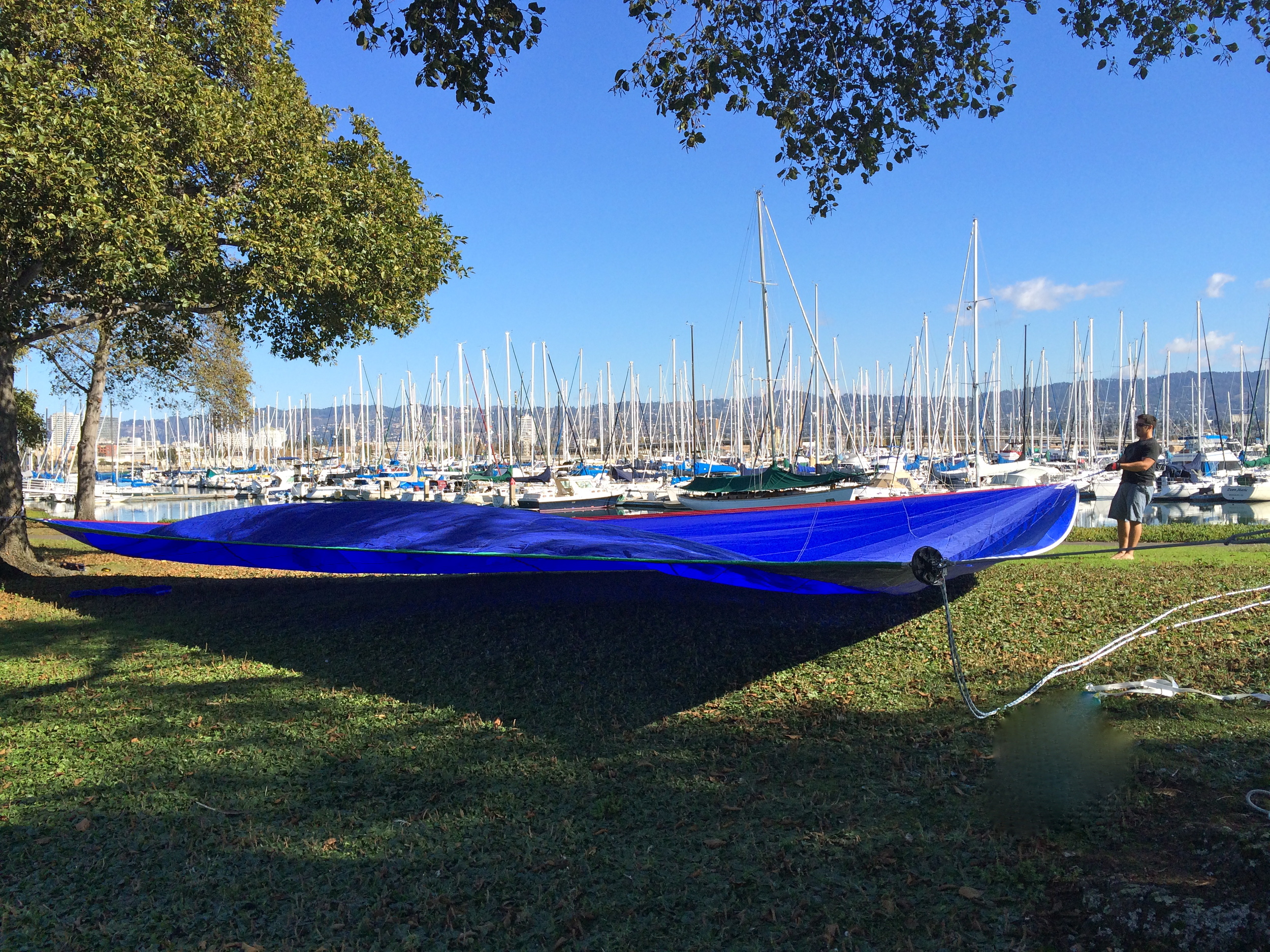Cruising Code Zero
"Is that how the sail is supposed to look?"
Let's talk about sails. When moving upwind, sails act like airplane wings generating lift to propel the boat forward. Downwind they act more like kites pulling the boat through the sea. Sails are pieces of fabric stitched together since the beginning of recorded history so humans could explore, trade, conquer and birth civilizations. Sails are highly complex, continuously changing, and a really personal choice every sailor has to make to fit the needs of their journey. Sails are a lot to talk about!
The standard monohull sailboat is what's called a sloop, meaning it has one mast and two sails, a mainsail, and a foresail. Helios is a cutter, meaning we have three sails permanently rigged, the same mainsail and foresail as the sloop, plus the addition of a second smaller foresail called a staysail.
In this image, you can see the mainsail raised aft of the mast. The primary foresail runs from the top of the mast to the bow; the staysail runs from 3/4 height of the mast to the foredeck (the leading edge of the foresails are roughly parallel). This means Helios is well equipped to sail up wind and in heavy winds. We have three different sails to raise, and we can fly just the staysail if we're overpowered.
However, we anticipate that for the majority of our sailing time we will be heading downwind and in relatively light conditions (hooray!). So this put Dominic and I in an exciting position for any sailors: we needed a downwind sail!
The traditional downwind sail is called a spinnaker. Spinnakers are very lightweight, and usually only attach to the boat by the corners, so they have lots of room to balloon out ahead of the boat. They're usually bright and colorful, and a quick Google image search will yield abundant results. The downsides of a traditional cruising spinnaker are they are bulky to store, challenging to take up and down (a big deal if a squall comes in the middle of the night), and they are limited to a relatively narrow range of wind angles.
Dominic did a ton of research and worked with the team at Island Planet Sails to design a cruising code zero for Helios. From my lay perspective this sail seems to be a cross-child between a spinnaker and a fancy new style of racing sail. It's as lightweight and colorful as a spinnaker, but the foreword edge, the luff, has a built in anti-torsion luff line that can be used to furl the sail (to furl a sail is to roll it tightly around itself, like one would roll sushi). This makes the sail very easy to take out and put away in quick weather changes, and more space efficient to store down below. It is also usable under a wider variety of conditions and sailing angles than the spinnaker.
When out sailing two weeks ago, Dominic and I raised the code zero for the first time. She was a beauty!
We actually had our first adventure with the code zero before we raised it. It came to us folded into the sail bag and needed to be furled. After a failed attempt to do so on the boat, we decided to take the sail to a nearby park, extend the anti-torsion line between two trees and furl from there. We had some excitement packing and unpacking the sail in our cabin, some practice with the furling mechanism, and then a killer new sail to raise!



